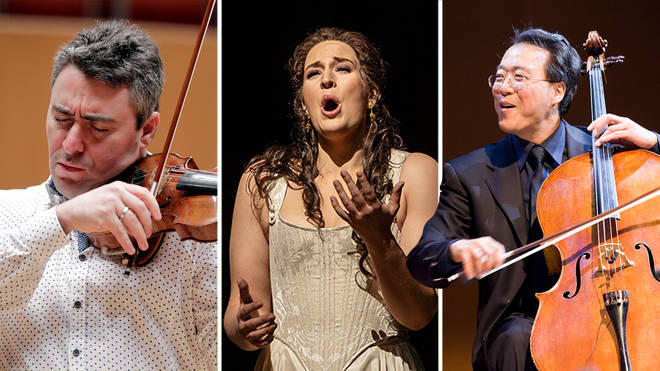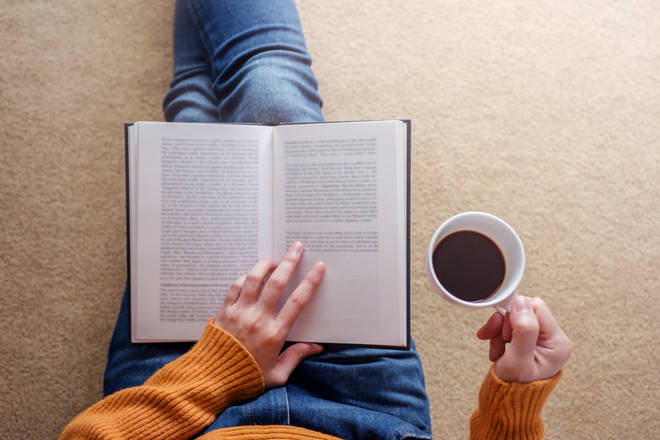On 25 October 1825, in the bustling heart of Vienna, a child was born who would etch his name into the annals of musical history as the undisputed “Waltz King.” Johann Strauss II, son of the original Strauss patriarch, Johann Strauss I, emerged not just as a composer but as a cultural phenomenon, transforming the Viennese waltz from a simple ballroom diversion into a global symbol of elegance, romance, and unbridled joy.
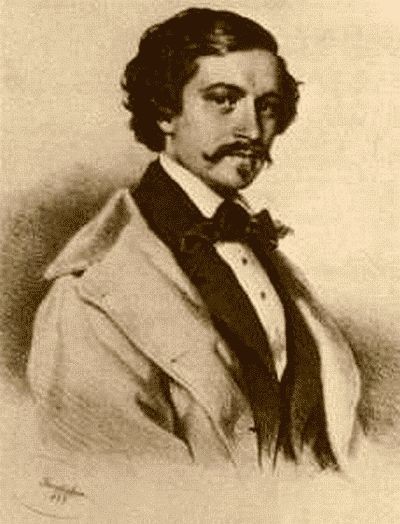
Johann Strauss II
Johann Strauss II: “Viennese Blood”
Strauss Junior captured the spirit of 19th-century Europe, his music a whirlwind of imperial grandeur, social upheaval, and hedonistic escape. As we celebrate the 200th anniversary of his birth, the city of Vienna has declared a bicentennial extravaganza that reaffirms his legacy as a bridge between classical sophistication and populist delight.
The Johann Strauss 2025 Viennese celebrations run under the motto “King of Waltz, Queen of Music,” and encompass over 65 performances, three major exhibitions, and events spanning 71 locations across all 23 districts of the city. As musicologist Michele Calella of the University of Vienna notes, Strauss’ work remains “quintessentially Viennese, shaping the city’s identity as a cultural beacon even today.”
Against the Grain
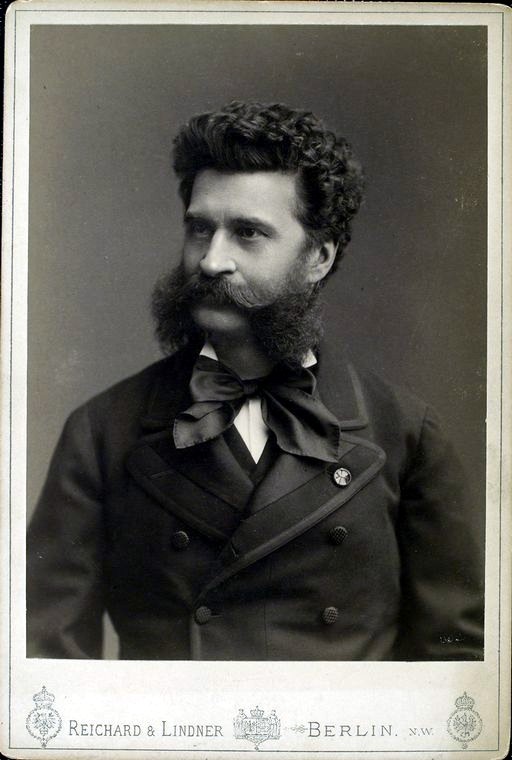
The young Johann Strauss II
Johann Strauss Junior’s story begins in defiance. Born into a musical dynasty dominated by his father, young Johann was forbidden from pursuing composition. The elder Strauss envisioned a bourgeois future for his son: first law school, then a banking career, stability, anything but the itinerant life of a bandleader.
Defying paternal expectations, Strauss Junior secretly studied violin and compositions, debuting at age 19 at Dommayer’s Casino in Vienna. The selection of music he presented included works by Meyerbeer, Auber, Suppé and also by his father.
He also gave the premières of four of his own compositions, and the press was unanimous in its praise for the young Strauss and his music. This act of rebellion ignited a lifelong rivalry with his father, yet his early waltzes, like “Sinngedichte” and “Gunstwerber” captivated audiences with their lyrical charm.
The Sound of a New Era
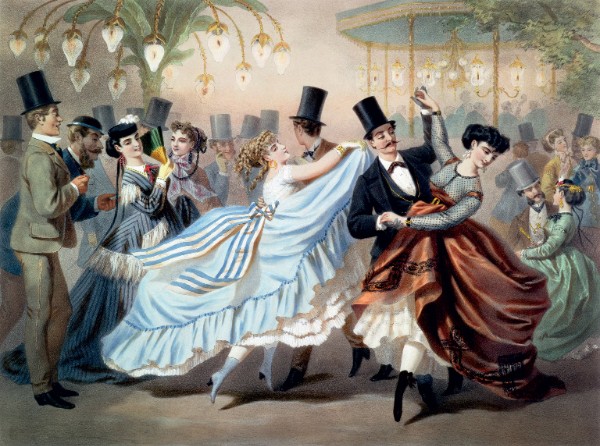
Waltzing in the 19th century
Strauss’ early career was a whirlwind of polkas, marches, and waltzes that mirrored the era’s ferment. The 1848 revolutions rocked Vienna, yet Strauss, ever the entertainer, composed pieces like the “Revolutions-Walzer,” blending revolutionary fervour with danceable levity.
He quickly eclipsed his father’s fame, and upon Johann I’s death in 1849, Strauss Junior merged the ensembles to form a “super-virtuoso outfit” that toured Europe with unprecedented success.
The orchestra, under his baton, was renowned for its precision and ability to convey the lilting, almost dance-like quality of his music. The orchestra became Vienna’s musical heartbeat, delivering performances that balanced technical finesse with a sense of spontaneity. Strauss’ genius lay in elevating dance music to an art form, infusing it with sophistication while keeping it accessible and joyous.
The Mozart of the Waltz
Strauss was also a master of orchestration, using the ensemble’s strings, woodwinds, and brass to create a lush, sparkling sound that felt both grand and intimate. His ability to tailor music for specific occasions, whether imperial balls or public concerts, meant the orchestra could shift seamlessly between grandeur and playfulness.
Let’s not forget, however, that Strauss Junior staunchly championed the music of Liszt and Wagner. Johann and Josef Strauss were the first musicians in Vienna to feature extracts from Wagner’s operas in concert. Similarly, arrangements of Verdi’s music frequently figured in the programmes of the Strauss Orchestra.
This unprecedented versatility made the Strauss Orchestra a cultural institution, exporting Viennese charm across Europe and beyond. Strauss embarked on tours to Russia, England, and America, where in 1872 he conducted 23 concerts in Boston, earning the moniker “the Mozart of the waltz.”
The First Pop Star
Johann Strauss II in concert
Music historian H. E. Piggott describes Johann II as “the first pop star,” a composer whose “sheer consistency of invention” outshone all contemporaries. Strauss’ innate skill at instrumentation as well as his lifelong genius for melodic invention drew the praise of a number of composers.
Verdi said, “I honour him as one of my most gifted colleagues,: and even the usually grumpy Johannes Brahms once quipped, “sadly, the Blue Danube is not by me.” Brahms’ envy highlights Strauss’s effortless genius, as Strauss himself reflected. “Music is the most beautiful of all arts, for it is no more than feeling itself,” a sentiment that captures his intuitive blend of technical prowess and emotional immediacy.
Strauss’ operettas further cemented his fame, as he ventured into the theatrical realm with Die Fledermaus (1874) and Der Zigeunerbaron (1885). These sparkling confections, which premiered at the Theatre an der Wien, fused waltz rhythms with satirical plots, poking fun at Viennese high society while offering escapist fantasies.
A Life of Contrasts
Yet, Strauss’ personal life was far less buoyant. Three marriages marked by scandal, including his 1886 citizenship change to Saxe-Coburg-Gotha for his third wife, left him isolated, dying childless in 1899 from pneumonia. “Happy is he who can forget what cannot be changed anymore,” he once wrote and set to music.
Through it all, the music of Strauss II embodied resilience. The theatre scholar Anke Charton argued in the University of Vienna lecture series “Strauss Topographies” that his oeuvre reflects Vienna’s socio-cultural pulse, “ranging from Biedermeier domesticity to fin-de-siècle decadence.”
Even Ralph Vaughan Williams, no fan of “salonesque miniatures,” conceded that “a waltz of Johann Strauss is good music in its proper place.” And that proper place was the ballroom, the concert hall, and the silver screen, all ensuring Strauss’ immortality.
A Golden Milestone
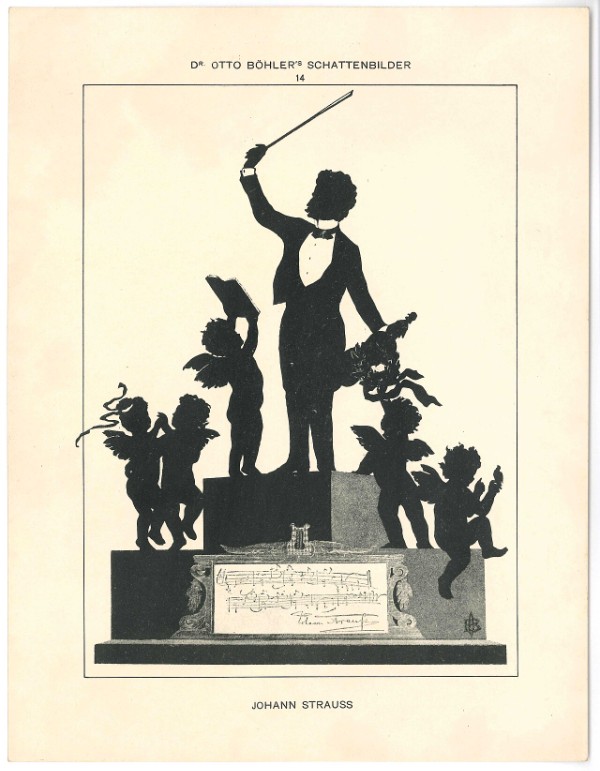
Johann Strauss II
In 1894, Johann Strauss celebrated his golden jubilee year as a composer and conductor, and responding to an official toast, said, “The distinctions which you bestow upon me today I owe to my predecessors, my father and Joseph Lanner. They indicated to me the means by which progress is possible, through the broadening of the forms, and that is my single small contribution.”
The composer openly acknowledged that the fundamental structure of the Viennese waltz had been developed, expanded, and formalised by the elder Strauss and Lanner. Strauss II did, however, extend the form and provided greater coherence to each composition.
As scholars write, Strauss II developed the introduction to provide almost symphonic music, and “the waltz themes themselves were expanded melodically and harmonically to produce a seemingly homogenous entity.” In addition, the coda was lengthened to give balance to the whole. His masterly orchestration prompted Brahms to remark that “there is now no one who is as sure as he is in such matters.”
Vienna’s Heartbeat
Johann Strauss Junior’s legacy is woven into the cultural fabric of Vienna and the world, his music embodying the spirit of an era while transcending time. Elevating the waltz from a simple dance to a symphonic art form, his compositions are not mere tunes but sonic portraits of 19th-century Vienna.
Strauss’ genius lay in his ability to distil complex emotions into accessible, unforgettable melodies, performed with his orchestra’s signature blend of precision and spirited warmth. His music became the heartbeat of Viennese society, played in glittering ballrooms and public gardens, uniting aristocrats and commoners in shared delight.
Strauss’ legacy also endures in the institutions and traditions he inspired, which continue to thrive in 2025. The Vienna Philharmonic, closely tied to the Strauss family, remains a custodian of his music, with its New Year’s Concert a global phenomenon.
Music Uniting Generations
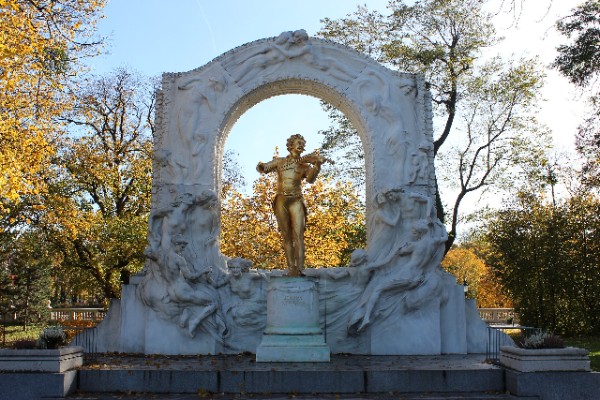
Monument of Johann Strauss II
Museums like the House of Strauss at Casino Zögernitz and the Johann Strauss Museum in Vienna preserve his manuscripts, instruments, and personal artefacts, offering glimpses into his creative process and the vibrant world he inhabited.
These spaces, alongside initiatives like the Vienna Institute for Strauss Research, underscore his role as a cultural titan whose music reflected and shaped Vienna’s identity as a musical capital. To be sure, his compositions have permeated popular culture, spawning modern reinterpretations in concerts and digital media.
Strauss’s ability to evoke joy and nostalgia ensures his music remains a living legacy. His bicentennial transcends nostalgia, as it interrogates his relevance. In a fragmented world, his waltzes foster communal joy, much as they did amid 19th-century upheavals.
